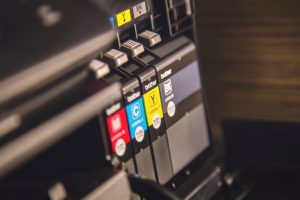After creating a splash with its Multi Jet Fusion (MJF) 3D printing technologies, HP is now stepping into the customised made footwear race using a brand new 3D scanning alternative dubbed the FitStation. The FitStation is used to make custom made insoles, these orthotics are subsequently 3D printed with MJF.
HP is not racing alone in the customised footwear marketplace. Multiple big producers, such as Nike and Adidas, are 3D printing shoe soles, even though quite a few startups, such as Feetz and Wiiv Wearables, are focusing on goods which range from 3D-printed sneakers to women’s sandals.
What is HP’s standing in the race? Let us look at just how HP compares to its rivals.
HP
HP’s FitStation is a hardware and software platform which initially 3D scans an individual’s foot, it then measures foot pressure and performs gait evaluation to make a “digital profile” of every foot. These then make it feasible to 3D print insoles and create custom footwear. The footwear may subsequently be 3D printed on HP’s MJF platform.
The hardware will be installed in 4,000 retail locations via Superfeet, an over-the-counter insoles business. Furthermore, safety shoe maker Steitz Secura will utilise the FitStation because of its ease and comfort, and preventative health and security operations.
SOLS
One of the earliest companies to reach the trail was SOLS, a New York based start-up which generates custom insoles generated through photogrammetric algorithms which convert photographs taken of feet using a smart phone program. These orthotics are subsequently 3D published from nylon utilizing selective laser sintering (SLS).
Though it was early in the piece, SOLS lay off 20 percent of its employees in January 2016 and was finally obtained by Aertex Worldwide, yet another custom orthotics and shoe maker, in March 2017. Aertex, located in New Jersey, is utilising the acquisition to match its own foot scanning technologies. But when you have a look at the business’s social media existence, you will notice that nothing much has been submitted since June 2017, they might be falling behind in the online shoes game.
Wiiv Wearables
Wiiv is newer to the game, but has shown to be an effective player after Launching what was at one time regarded as the most successful 3D-printing product on Kickstarter along with a 3D-printed insole made through photogrammetry plus a smart phone program. Much like SOLS insoles, Wiivv’s wearables are 3D printed with SLS.
Wiiv has since jumped ahead to 3D-printed sandals and therapy shoes. At about exactly the exact same period that SOLS was bought by Aertex, Wiiv had launched its own 3D printed sandal line-up on Kickstarter, which also was successfully funded at more than $500,000.
Feetz
 Feetz is an exceptional case in that the San Diego-based startup is 3D printing whole shoes. Like the aforementioned products, sizing is set through photogrammetry plus a smart phone program. The shoe is subsequently 3D printed on fused filament manufacture (FFF) 3D printers utilising recycled material. After a wearer wishes to throw out the set, they could send them straight back to the firm, which separates the materials again to create new shoes. According to the firm, Feetz products use zero water, are manufactured using recycled and biodegradable materials, and reduce our carbon footprint by 60 percent.
Feetz is an exceptional case in that the San Diego-based startup is 3D printing whole shoes. Like the aforementioned products, sizing is set through photogrammetry plus a smart phone program. The shoe is subsequently 3D printed on fused filament manufacture (FFF) 3D printers utilising recycled material. After a wearer wishes to throw out the set, they could send them straight back to the firm, which separates the materials again to create new shoes. According to the firm, Feetz products use zero water, are manufactured using recycled and biodegradable materials, and reduce our carbon footprint by 60 percent.
In fall 2016, Feetz partnered with shoe retailer DWS to create custom made women’s sneakers at pop up stores at DSW’s NYC 34th St and SF Union square places. More recently, the startup worked with two-time Project Runway winner Seth Aaron to start the very first 3D-printed designer shoe line-up in Fashion Week this autumn.
Under Armour
As we start discussing large shoe makers, it is important to be aware that almost every one of these businesses has been utilising 3D printing for in-house design and prototyping for a while. Just in the last couple of years have they started producing end goods with 3D-printed pieces.
Under Armour has surfaced with 3D printing starting out with the UA Architect, a limited edition shoe line-up with 3D-printed soles. In spring 2017, the business declared that it had been further investigating shoes with 3D-printed soles together for the Futurist line. The shoe comes with a sole equipped with a weight-saving lattice arrangement 3D printed from thermoplastic polyurethane (TPU) developed by Lehmann&Voss&Co on Under Armour’s SLS machines.
Priced at $300, the shoe show has been Under Armour’s most expensive so far, in addition to its biggest batch of sneakers with 3D-printed pieces. Each shoe series has been a hit and they have quadrupled production.
Adidas
After Adidas purchased its very first shoe with 3D-printed components, the 3D Runner, to advertise in December 2016, it chose to expand the hard work and pass Under Armour in the race. Not only was Adidas moving from SLS into exciting new technologies, but it also was planning for mass manufacturing. Before this yesr, Adidas declared that it would be utilising Carbon’s ultra-fast constant digital light projection (cDLP) 3D-printing method to mass produce the bottoms of its Futurecraft 4D shoes.
Although the sneakers aren’t tailored to the wearer’s toes like men’s dress shoes are, the plan is to finally introduce personalisation. The business started with 300 pairs of Futurecraft 4D sneakers this spring and is aiming to get 5,000 pairs this autumn or winter before mass producing over 100,000 pairs by the end of 2018. If the corporation can accomplish this, then it could be the very first mass-produced shoe line-up comprising of 3D-printed parts to reach the marketplace.
Reebok
 Reebok paces directly alongside Adidas and Under Armour, however not only by 3D printing shoe parts. It’s inventing its own 3D-printing technology. Reebok’s Liquid Speed shoe line-up comes with a polyurethane outsole that wraps from the bottom of the shoe to make the shoe’s lacing system.
Reebok paces directly alongside Adidas and Under Armour, however not only by 3D printing shoe parts. It’s inventing its own 3D-printing technology. Reebok’s Liquid Speed shoe line-up comes with a polyurethane outsole that wraps from the bottom of the shoe to make the shoe’s lacing system.
To make the piece, the business created a robotic system that makes polyurethane in the appropriate pattern. This past year, the business produced 300 pairs. Reebok intends to expand on this job so that it may create these shoe parts locally to its vendors and finally move away from the standard shoe production system.
New Balance
When it comes to corporate gamers, New Balance was among the first to embrace 3D printing to make midsoles. The company initially used SLS to try out the technique and afterwards considered mass manufacturing midsoles employing high speed sintering (HSS), a 3D-printing technology which uses infrared light to sinter particles collectively. If infrared sintering seems familiar, that is because HP’s MJF additionally depends upon infrared lamps to sintering particles collectively. Contrary to HSS, MJF additionally utilises a specialisation detailing representative in the 3D printing process, which presents the possibility of operational inks for printing conductive substance, different colours and much more.
New Balance finally partnered with 3D Systems to utilise SLS And create the first commercially available running shoe using 3D-printed components, the Zante Generate. The midsole, printed in TPU, include a distinctive, organic design made by 3D-printing design studio Nervous System. The business started with 44 pairs of their specialisation shoes, but intends to launch customised variants at some stage this year.
Nike
Nike entered the 3D-printing race in 2013 using the Vapor Laser Talon, which was prototyped with 3D printing. Having a practical nylon plate and grip system 3D printed with SLS, 3D printing enabled Nike to decrease weight and improve the layout. The consequent cleat was reported to be among the quickest cleats made and seven of the 10 fastest athletes in 2013 NFL wear them.
The business went on to make the Vapor HyperAgility Cleat and after the Vapor Carbon Elite Cleat with 3D printing throughout the prototyping phase.
After HP entered the 3D printing business with its MJF Printers, it transported numerous big names as partners, including BMW and Johnson & Johnson. One of those partners was Nike. Just how precisely the organization is utilising MJF is uncertain, however after years of prototyping with SLS, it feels like it ought to be about time that they start generating end parts to keep up a neck-and-neck rate with the competition.
What is the Deal with 3D-Printed Footwear?
If you think 3D-printed footwear is your next major thing and, although you will find products available on the current market, 3D-printed shoes and insoles is far from mass adoption. Part of why these products appear so attractive to companies like New Balance and Under Armour, along with this hype-ability, is the simple fact that 3D printing midsoles and insoles is a comparatively straightforward means to present 3D printing and mass personalisation into the market.
It is still hard to 3D print a whole shoe and keep a slick look and comfy feel (simply ask Feetz), however 3D printing a midsole isn’t quite as hard because it resides on the exterior of this shoe. At exactly the same time, it is possible to present weight savings and exceptional design attributes to this component of the shoe, for example lattice structures which may use less material, but also provide better cushioning and, perhaps, functionality.
Because of this, the large shoe companies are researching the technology. It lets them put skin in the game, examine the market and learn more about the potential for mass production.
Insoles take advantage of 3D printing a single step farther by which makes it feasible to fabricate products tailored to your client’s feet. This goes past the one-size-fits-all approach now seen from the area of manufacturing which is great for parents attempting to buy kids shoes online, not only with sneakers but also with automobiles and cans and whatever you can imagine. Futurists and 3D-printing aficionados are anticipating a day where each item is going to be tailored to the user and produced in bulk, a concept known as mass customisation.
You will notice from this article that SLS is among the best technologies selected for these experiments in mass personalisation. SLS includes a high throughput and utilises an engineering-grade substance including nylon and TPU, which makes it the preferred technology for batch manufacturing by 3D-printing service agencies for several years.
But more recently, new technologies have entered their own race for maximum throughput for a method of kicking open the doors of this 13 trillion production business to 3D printing and, thus, mass personalisation. Adidas, for example, has selected Carbon’s variant of cDLP because of its speed and substance. MJF also is attractive for mass customisation, since it’s promoted to be 10 times quicker than SLS.
Presently, traditional consumer goods such as sporting wear and women’s boots are made for a very low price by leveraging employees in developing countries working for low pay and often in dangerous conditions. Regardless of the widespread understanding of those practices, many producers continue to participate in these exceptionally debatable supply chains.
Another fantasy of 3D printing for a technology for ending manufacturing is the capability to re-localise production, and decreasing prices to the point that companies are incentivised to manoeuvre away from sweatshop labour. Whether or not that is possible without presenting regulations and trade deals that support humane working conditions and cover is not the same topic, but not one which should go discounted as businesses hype new technology and goods With different marketing-friendly rationales, for example re-localization.
